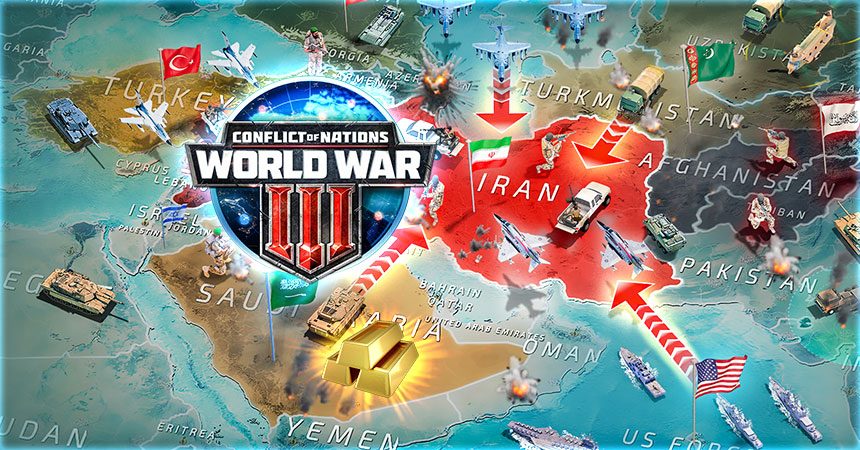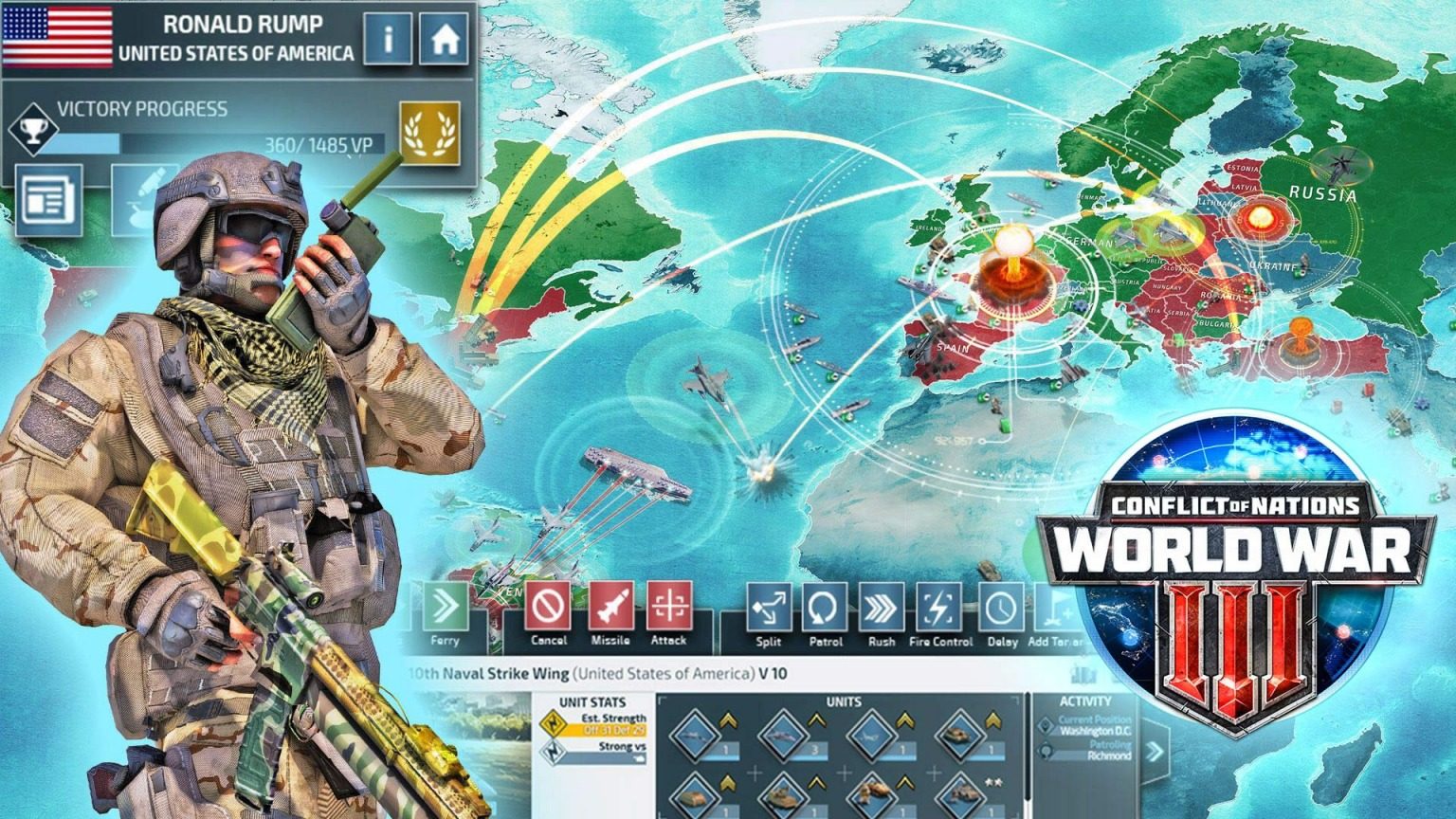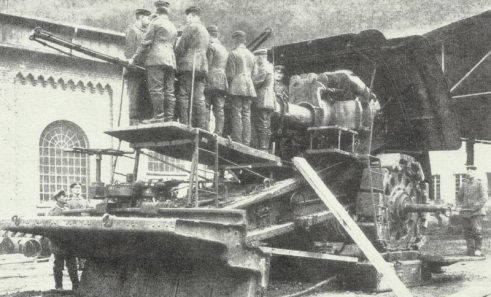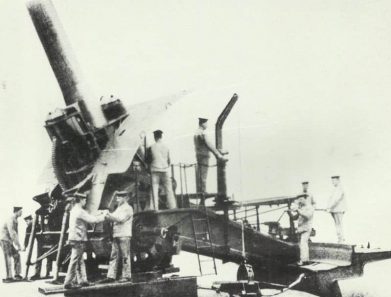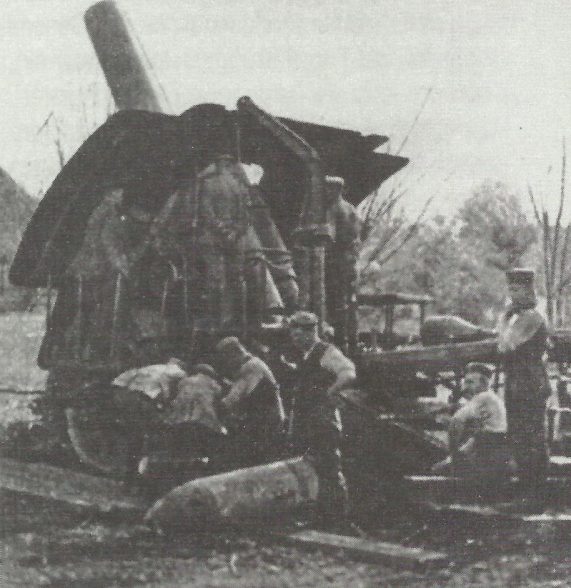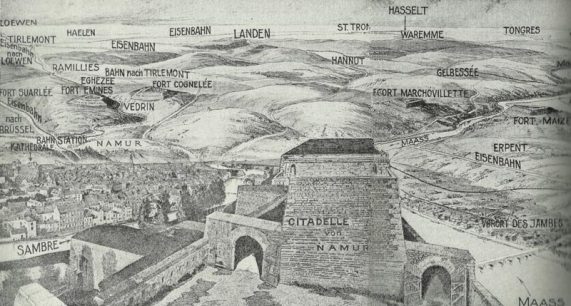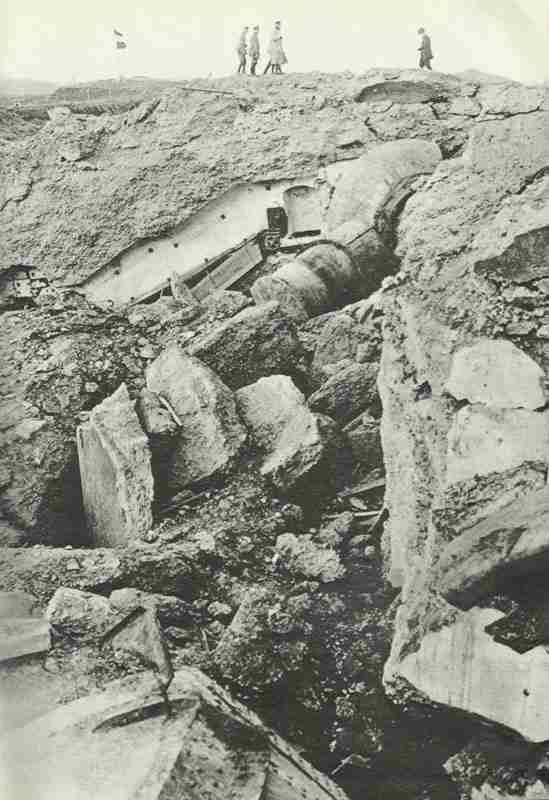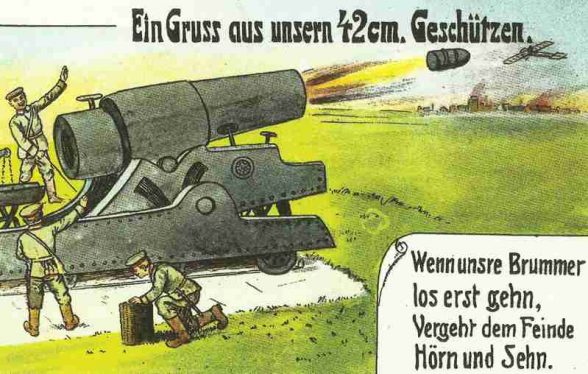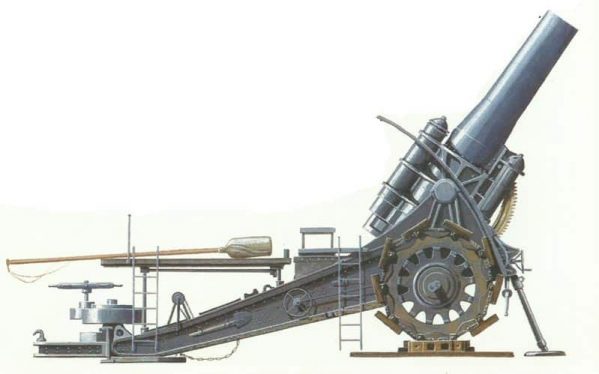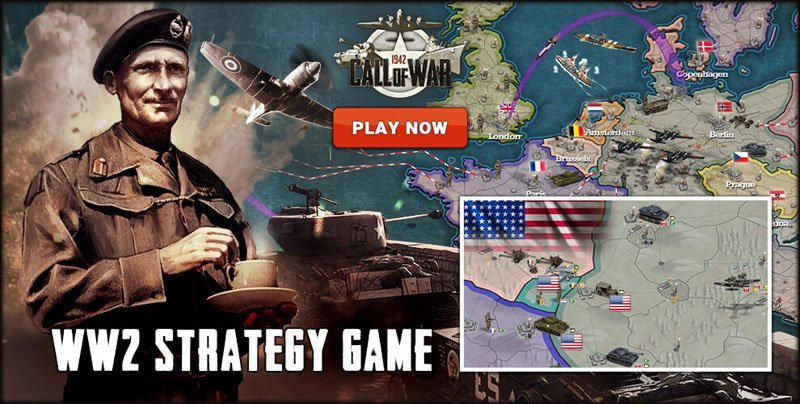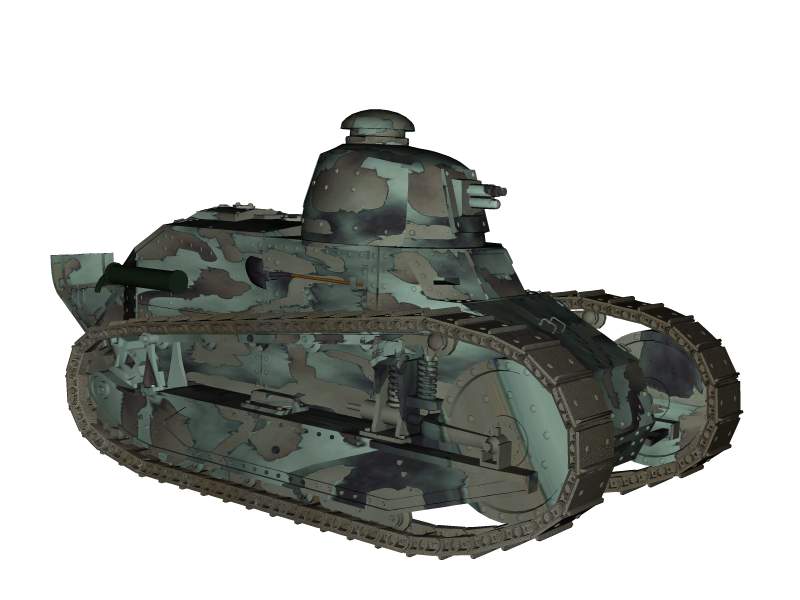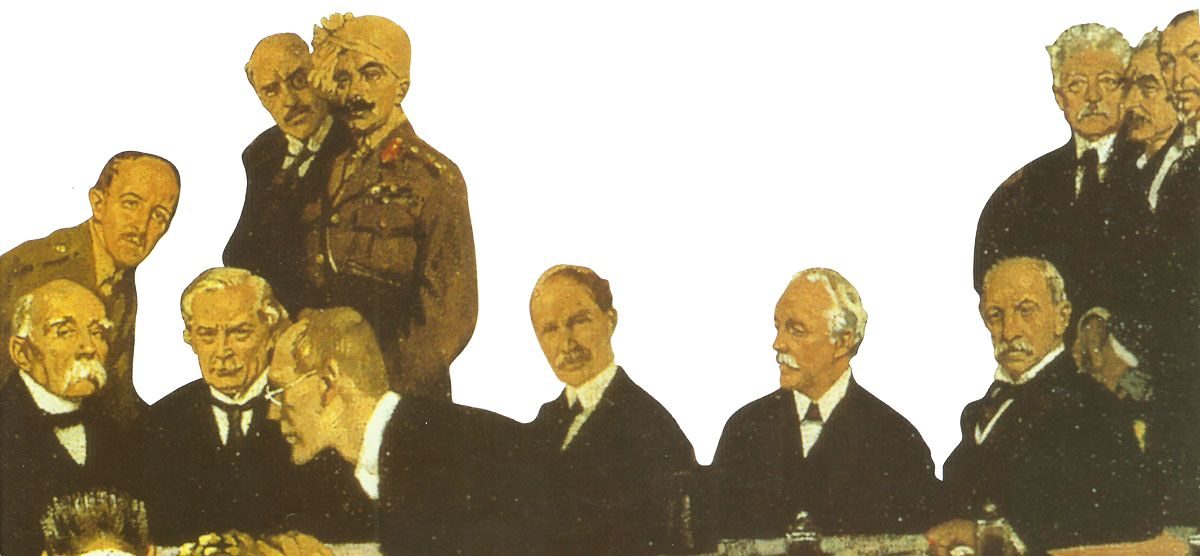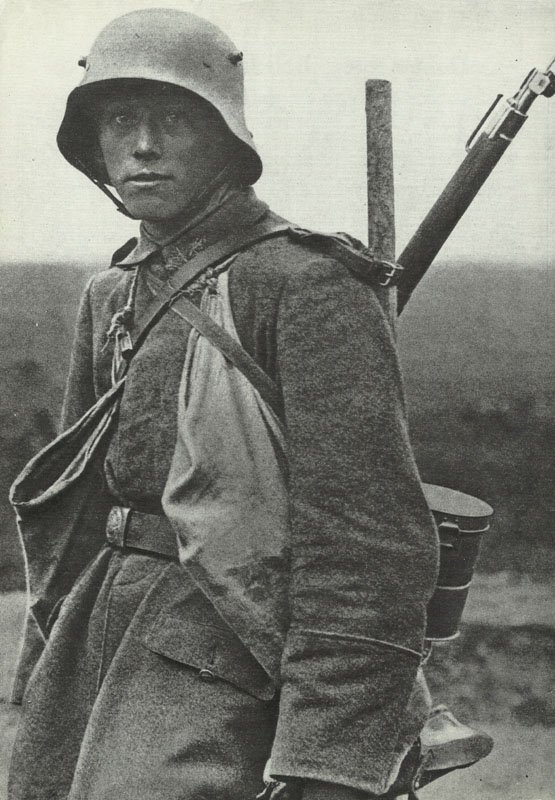German super-heavy siege howitzer M-Gerät ‘Big Bertha’ from World War One.
History, development, service, specifications, pictures and model.
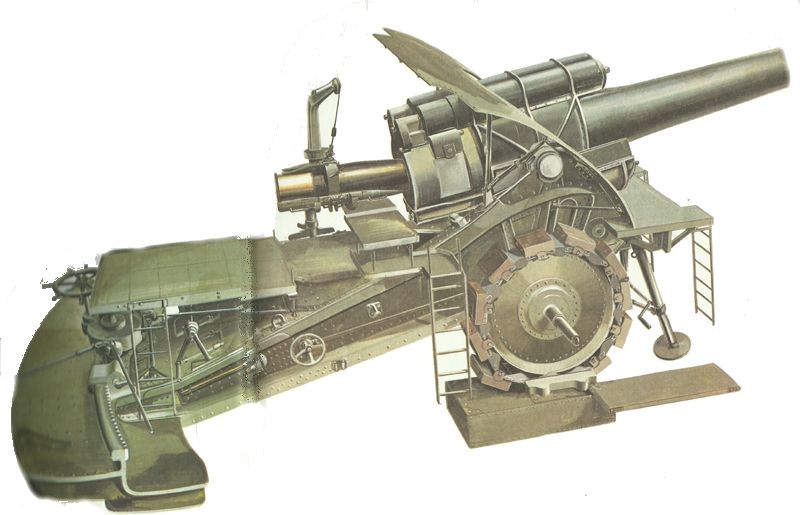
Super-heavy siege howitzer ‘Big Bertha’
Table of Contents
Kurze Marinekanone 14 L/12 (M-Gerät) ‘Big Bertha’
Type: super-heavy howitzer.
‘Big Bertha’ was the nickname given to a type of super-heavy howitzer used by the German army during World War I. The official German name for the gun was ‘L/12’, which referred to the length of the barrel in calibers (12 calibers long). The gun was designed and manufactured by the Krupp company, one of Germany’s leading arms manufacturers.
Overview about the ‘Big Bertha’
– It had a caliber of 420 mm (16.5 inches) and could fire shells weighing up to 820 kg (1,807 lbs).
– The gun’s maximum range was around 9.3 km (5.8 miles), which was considered impressive for its time.
– It required a crew of 200 men to assemble, transport, and operate.
– The gun was transported in several parts and assembled on a specially designed rail carriage at the firing site.
– ‘Big Bertha’ was primarily used to destroy heavily fortified targets, such as the Belgian fortresses, during the early stages of the war.
– The nickname ‘Big Bertha’ is believed to have originated from the German soldiers, possibly as a reference to Bertha Krupp, the heiress and owner of the Krupp company.
Although ‘Big Bertha’ gained significant notoriety during the war, its actual military effectiveness is debated, as it required immense resources to operate and maintain, and its mobility was limited.
History:
The ‘Schlieffen Plan’ which was designed to obtain the German defeat of France, by wheeling armies via Belgium to attack the French armies in the flank, was developed during the 1890s, and sharpened practically to perfection during the years up to 1914. It required the invasion of a neutral country (Belgium) as well as the quick surrender of the citadels at Liege and Namur, both of them among the strongest in The world. Heavy artillery was necessary, so Krupp was taking part.
All over previous years Krupp had been a major contributor to an extensive chain of super-heavy guns and howitzers, but to conquer the Belgian forts it needed to create something unique. It undertook a number of studies with heavy-caliber guns that finally resulted in a 420-mm howitzer called Gamma, an enormous monster that turned out to be very accurate when shooting a heavy shell capable of wrecking any fortification. But Gamma was a static gun, intended to be taken apart for moves and reassembled piece by piece after rail transportation. Even though the German staff planners liked the power of Gamma, they requested a gun that could be transported on roads and the obliging Krupp designers checked to their research and developed the answer. This was a bigger and improved wheeled carriage originally designed for a 305-mm (12-in) howitzer. Thus was created the M-Gerät (Gerät means device).
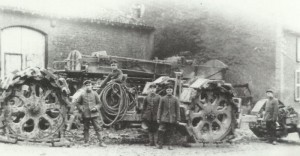
All this evolution happened right at the last possible moment, and it was not until August 1914 that the big howitzers moved off to war. The type was quickly named the ‘Dicke Bertha’ (Fat Bertha, but typically translated ‘Big Bertha’) to its crews and the name stuck. The crews belonged to a special unit named Kurze Marine Kanone 3, and in the beginning just 2 howitzers went into action against the Belgian forts. They moved on the roads in a group of tractor-towed loads, 5 to each gun. The carriages had been designed to allow the howitzers to be assembled with a minimum of work and time. Special armor-piercing projectiles plus the standard high explosive types were on hand.
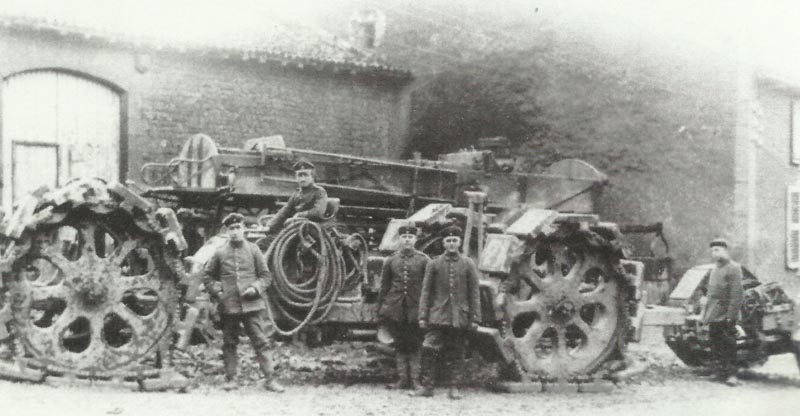
The effect of these enormous howitzers has now passed into history. Within a couple of days the great Liege forts were destroyed and forced to surrender, shortly to be accompanied by the Namur forts. The 420-mm (l6.54-in) shells were able to plunge deep into the earth before exploding and the resultant shock waves shook the forts to their foundations. They had an incredible moral as well as devastating impact, and after a couple of days of continuous bombardment the garrisons of the fort had been reduced to a condition of collapse.
Following use in Belgium the battery transferred to the Russian front, where it continued its triumphs. The howitzers were rapidly accompanied by more examples from the Krupp works, and yet more were in action on the Western Front. Nevertheless, it was soon discovered that the type’s precision fell off as the barrel became worn after even a limited time of shooting and that, consequently, devastating effects was reduced. Even though the ‘Big Berthas’ had a maximum range of 13,400 yards (ca. 12 km), their finest precision was received at approximately 9,490 yards (ca. 9 km). Another issue emerged painfully to light when it was learned that the projectiles were quite vulnerable to detonating while still inside the barrel the moment after firing, and several barrels were destroyed in this way.
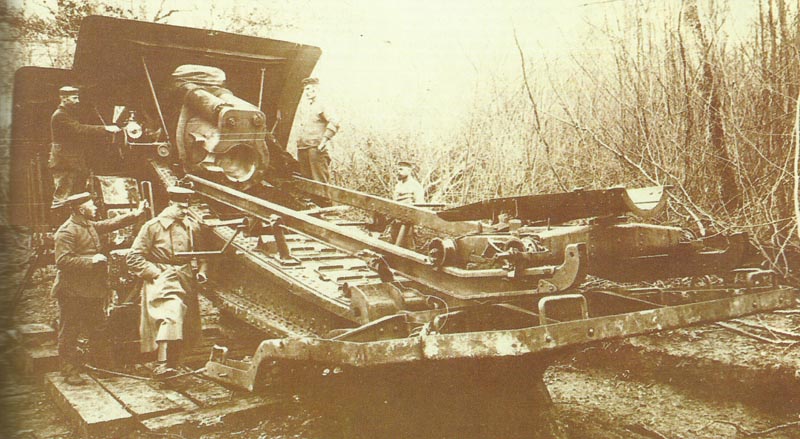
The ‘Big Berthas’ had their highest possible effects against the Belgian forts, for what they were originally designed. Thereafter their value dropped away, and a measure of this can be noticed in the truth that although they were used widely throughout the Verdun battles French reports make certainly no mention of their benefits, an indication that their day was already past.
Not one still existed after 1918, though the Gamma howitzers, used in the development of the towed ‘Big Berthas’, did survive. At least one saw action in 1942, when it was employed in the siege of Sevastopol.
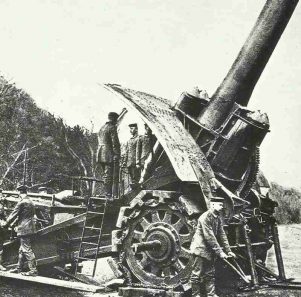
Specifications Kurze Marinekanone (short navy gun) 14 L/12 (M-Gerät/device) ‘Big Bertha’
Specifications:
Big Bertha | Specification |
|---|---|
Type | super-heavy howitzer |
Crew | ? |
Weight | in action: 93,915 lb (42,600 kg); travelling 206,623 lb (93,600 kg) |
Calibre | 16.54 in (420 mm) |
Length overall | ? |
Length of barrel | 16 ft 6.4 in (5.04 m) - other source 22 ft 0.7 in (6.72 m) |
Length of rifling | ? |
Elevation | -11° to +18° |
Traverse | 10° left to right |
Muzzle velocity | 360-547 ft/s (300-500 m/s) depending on shell type |
Maximum range | 10,170-13,400 yds (9,300-12,250 m) depending on shell type |
Rate of fire | 12 rounds per hour |
Shell weight | 883-1,786 lb (400-810 kg) projectiles |
Service statistics:
Big Bertha | figures |
|---|---|
Production order | July 1911, second one shortly after |
Production delivery | 2 from 1912 to start of war, later 12 more |
Total production figure | total 14 |
Price per unit | 1 Million Reichsmark (RM) |
Available August 1914 | 2 |
Available November 1914 | 8 |
in action at Verdun Feb 1916 | 13 |
References and literature
An Illustrated History of the Weapons of World War One (Ian Westwell)
The Illustrated Encyclopedia of Weapons of World War I (Chris Bishop)
Illustrierte Geschichte des Ersten Weltkriegs (Christian Zentner)
Die Geschichte der Artillerie (John Batchelor, Ian Hogg)


